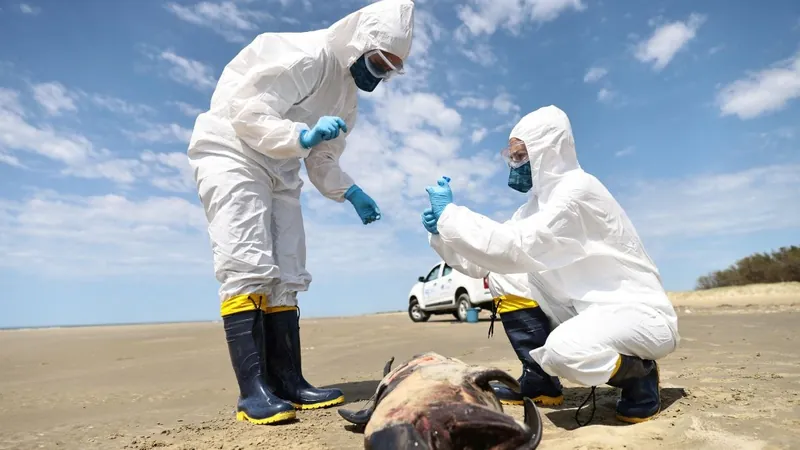
Is Bird Flu Set to Become a Major Health Crisis in 2025? Here's What You Need to Know!
2024-12-29
Author: Arjun
Is Bird Flu Set to Become a Major Health Crisis in 2025?
As the world recovers from the COVID-19 pandemic, public health officials are on high alert for the emergence of new infectious diseases. While existing threats like malaria, HIV, and tuberculosis remain critical, there is rising concern about a potential next big player: the H5N1 bird flu virus.
This particular strain of Influenza A, commonly known as bird flu, is causing alarm due to its expanding presence among wild and domestic birds, as well as recent cases in dairy cattle across several US states and even horses in Mongolia. The fact that this virus has now begun to infect humans—61 reported cases in the US this year—has raised red flags in the medical community. These infections primarily occurred among farm workers who came into contact with infected animals or consumed unpasteurized milk.
To put this into perspective, there were only two reported cases of human infection in the Americas over the previous two years, highlighting the current outbreak's alarming increase in frequency. With a staggering 30% mortality rate from these infections, bird flu is rapidly climbing the ranks of global health concerns.
The good news is that, as of now, H5N1 doesn’t spread easily between humans, which lowers the immediate threat of a pandemic. This lack of human-to-human transmission is largely due to the structural differences in the sialic receptors that the virus must bind to in order to infect human cells. H5N1 has specific adaptations suited to birds, making it less efficient at invading human cells.
However, a recent study revealed that a single mutation in the bird flu genome could potentially allow it to adapt to human receptors. Such a mutation could enable H5N1 to spread rapidly among humans, which would necessitate swift governmental action to curb its proliferation.
In preparation for potential outbreaks, governments worldwide are ramping up their pandemic readiness plans. For instance, the UK has secured 5 million doses of the H5 vaccine to prepare for any escalation in 2025. These proactive measures could prove vital in controlling the virus before it becomes a widespread public health menace.
Moreover, the implications of H5N1 go beyond human health. The virus poses a significant risk to animal populations, potentially disrupting livestock health and leading to severe economic repercussions due to food supply chain disturbances. This reality underlines the importance of adopting a “One Health” approach—a framework that views human, animal, and environmental health as interconnected and mutually influential.
By focusing on disease surveillance across all these sectors, we can better shield ourselves against emerging pathogens. However, while vigilance against bird flu is essential, we must not lose sight of the ongoing struggles against "slow pandemics" like malaria and tuberculosis. Addressing these chronic health challenges remains crucial as we navigate the uncertain landscape of future public health threats.
Stay informed and prepared! The next big outbreak could be just around the corner, and understanding the threats posed by viruses like H5N1 is key to safeguarding our future.


 Brasil (PT)
Brasil (PT)
 Canada (EN)
Canada (EN)
 Chile (ES)
Chile (ES)
 Česko (CS)
Česko (CS)
 대한민국 (KO)
대한민국 (KO)
 España (ES)
España (ES)
 France (FR)
France (FR)
 Hong Kong (EN)
Hong Kong (EN)
 Italia (IT)
Italia (IT)
 日本 (JA)
日本 (JA)
 Magyarország (HU)
Magyarország (HU)
 Norge (NO)
Norge (NO)
 Polska (PL)
Polska (PL)
 Schweiz (DE)
Schweiz (DE)
 Singapore (EN)
Singapore (EN)
 Sverige (SV)
Sverige (SV)
 Suomi (FI)
Suomi (FI)
 Türkiye (TR)
Türkiye (TR)
 الإمارات العربية المتحدة (AR)
الإمارات العربية المتحدة (AR)